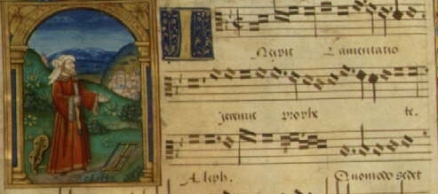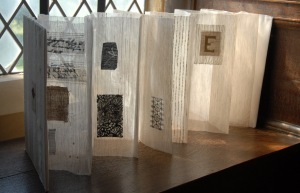Our project, Conversion Narratives in Early Modern Europe, officially came to an end on 31st August 2013, though events, publications and ideas are still emerging, and carrying us forward in new and exciting directions. Here, project co-director, Simon Ditchfield, reflects on the three years of the Conversion Narratives project. Continue reading
Narrative Conversions: a Workshop
 On 2nd and 3rd June, we will be hosting a workshop on the theme of Narrative Conversions, organised in collaboration with the Early Modern Conversions project. We’ll be led in conversation by Warren Boutcher, Reader in Renaissance Studies at Queen Mary; Bronwen Wilson, Professor of Art History at UEA; and Carla Zecher, Director of Renaissance Studies and Curator of Music at the Newberry Library. Discussions will range across narrative lines (both figurative and literal), tales of musical conversion, and the transformations of translation. Participants will also be invited to discuss a small selection of pre-circulated papers, and enjoy some rapid-fire presentations from current and recent doctoral students.
On 2nd and 3rd June, we will be hosting a workshop on the theme of Narrative Conversions, organised in collaboration with the Early Modern Conversions project. We’ll be led in conversation by Warren Boutcher, Reader in Renaissance Studies at Queen Mary; Bronwen Wilson, Professor of Art History at UEA; and Carla Zecher, Director of Renaissance Studies and Curator of Music at the Newberry Library. Discussions will range across narrative lines (both figurative and literal), tales of musical conversion, and the transformations of translation. Participants will also be invited to discuss a small selection of pre-circulated papers, and enjoy some rapid-fire presentations from current and recent doctoral students.
The workshop will conclude with a walking tour of York, exploring its early modern conversions, and a response from Professor John Sutton, Deputy Director of the Department of Cognitive Science, Macquarie University.
For more details or to apply to participate, please contact Helen Smith (helen.smith@york.ac.uk). For our formal Call for Papers, Continue reading
Tattoos II
Following on from a post on holiday tattoos in Jerusalem I’ve come across an interesting reference to tattoos and conversion in Nabil Matar’s article ‘‘Turning Turk’: Conversion to Islam in English Renaissance Thought’, Durham University Journal, 1 (1994), pp. 33-50.
Matar talks about the phenomenon of Christians in the Ottoman Empire tattooing their children with a cross. This provided an indelible mark of faith as permanent as circumcision, and as the tattoo was commonly placed on the hand, arm or face, it was a visible reminder of the individual’s religious affiliation (pp. 38-39). Matar argues that the use of such bodily markers was designed to counteract the attractions and habits of the cultural and religious environment of the Ottoman Empire and prevent conversion to Islam.
‘Converted to a cat’
In honour of World Cat Day, I did a quick search on the fabulous Early English Books Online to see if cats were ever described as agents of conversion, in the same way as were their enemies (or at least their sometime prey) fish. Continue reading
An Interview with Jan Garside
Jan Garside, a textile artist, recently completed a set of three responses to our research and to the ‘Virtue and Vice’ exhibition at Hardwick Hall. A couple of weeks ago, I sat down with Jan to talk through her inspiration and the challenges of her work, and to learn more about the ‘Drawing Room’ installation. Continue reading
Weaving histories: contemporary textiles at Hardwick Hall
Yesterday, I made another trip to Hardwick Hall to help (well, mainly watch) textile artist Jan Garside and her collaborators install a set of three responses to our research, and to the themes of the ‘Virtue and Vice’ exhibition.
‘Go your ways for an Apostata’: the converting Courtesan
I’m really delighted to have been given the chance to contribute to the Dutch Courtesan project, an all-singing, all-dancing (and all-acting) web resource that has accompanied and informed a brilliant recent production of the play here at the University of York.
My interest in the play was piqued by one peculiar phrase, in which the title character declares: ‘Mine body must turn Turk for twopence’. Intrigued by this glimpse of an Islamic conversion, I began to explore the connections between religion and inconstancy that underpin this difficult, but intensely rewarding, drama. To find out more about my conclusions, read my article on the Dutch Courtesan project website.
Picture of a reading table?
A couple of days ago, I wrote a post about Bess of Hardwick’s reading. What I didn’t mention there was the description of the table on which Bess kept her books. According to the 1601 inventory of Hardwick, Bess’s books sat in her bedchamber, next to an hourglass and a mirror. Whilst it’s tempting to imagine these as the early modern version of an alarm clock and a looking-glass, for Bess they almost certainly had a more serious purpose. Continue reading
Public History at Hardwick
As regular readers of this blog will know, the Conversion Narratives team were delighted to welcome Hannah Hogan into our ranks during the spring term. Hannah has written a new blog post, reflecting on her experiences as an intern, working towards the ‘Virtue and Vice exhibition at Hardwick. You can read it over on the web pages for York’s Institute for the Public Understanding of the Past’.
A book that converted…
As part of the work of putting together the ‘Virtue and Vice’ exhibition, I got to return to a question that has fascinated me for a long time: women’s reading in the early modern period. Though moralists fulminated against the perils of women’s reading, and warned that it was likely to lead to all sorts of venereal vices, there is good evidence to show that women read widely, and that they enjoyed devotional and religious literature alongside a wide range of fictions, poetry, and other writings. Continue reading







